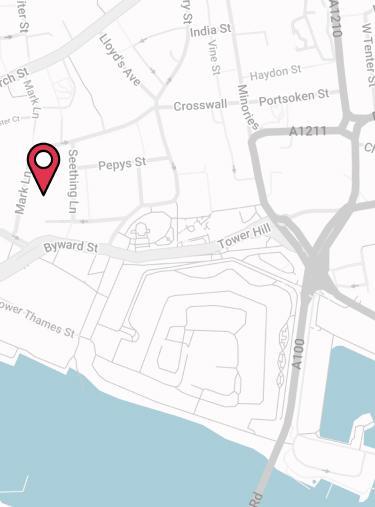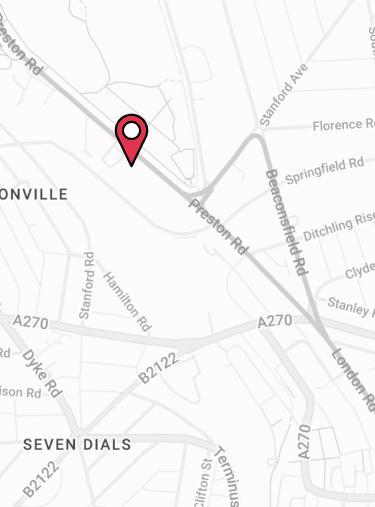
Employers Guide To Designing A Successful Total Reward Strategy
When it comes to attracting and retaining top talent, a Total Reward Strategy can give businesses a competitive edge.
It can help you as an employer to create and implement an employee benefits package which is highly valuable and cost effective. By giving you a clear plan of action, you can ensure that the benefits you offer align with the needs of your employees and business.
If you’re considering a Total Reward Strategy look no further. We’ve covered everything you need to know and outlined a clear structure to follow.
What Is A Total Reward Strategy?
To understand what a Total Reward Strategy is, it helps to know what the concept of Total Reward means. In simple terms, it refers to the complete value of everything you offer your staff.
- Financial Rewards – salary, bonuses, overtime
- Non-Financial Rewards – annual leave, learning & development budget
- Cash Equivalent Rewards – workplace pension, group risk products
- Intangible Rewards – flexible working, career progression, casual dress.
Total Reward Strategy, then, is a method of looking at your benefits holistically. It refers to the process of identifying and promoting the most effective employee benefits for your team.
Having such a strategy provides a clear action plan which takes everything into account. It looks at what benefits employees actually value and engage with. How they contribute to wider company goals and how they’ll be promoted and reviewed.
By reviewing and building your total reward offering in this way, you can craft a highly effective benefits package. One that meets the needs of not only your employees, but your business too.
What Is A Total Reward Statement?
A vital part of any Total Reward Strategy looks at how benefits will be communicated out to staff. This is where Total Reward Statements come in.
Each employee will receive their own unique statement. This will outline all the benefits and rewards they are entitled to and the value of them. It’s often displayed in a graph with a breakdown of what’s provided. We talk about this in more detail later on.
Why Is Having An Effective Total Reward Strategy Important?
As we’ve seen, a Total Reward Strategy can serve several purposes, including:
- Clarifying your business goals
- Helping employees align with those goals
- Identifying the most effective employee benefits
- Ensuring your benefits respond to staff’s needs
- Communicating employee benefits and how to access them.
Using such a strategy is important for many reasons, and can benefit you and your team in several ways. It responds to all the factors that impact your business, whether they’re internal or external. This helps to keep your Total Reward offering competitive and current in your industry.
Benefits For Employers
A well thought out Total Reward Strategy can have a number of benefits for you as an employer. We’ve outlined these below.
Attracting Top Talent
It’s no longer enough to offer a competitive salary to attract prospective employees. To stand out, companies need to offer a competitive reward package. A Total Reward Strategy can help you establish a purposeful, market leading proposition that attracts new top talent.
Increased Retention
Similarly, holding onto your high performing employees is more important than ever before. Recent studies show that people prioritise their workplace wellbeing over a higher salary. So, even if a team member receives an offer for a higher salary elsewhere, it won’t necessarily mean you lose them. Instead, staff want to keep the benefits they appreciate and work in a positive culture.
Improved Business Performance
As a Total Reward Strategy helps you to align your benefits with the needs of your company and employees, it can boost business performance. Offering benefits that staff want can make them feel valued. Feeling valued can lead to improved motivation, productivity and better workplace morale. This in turn can lead to better business results.
On top of that, you’ll save money on unwanted or unused benefits. This allows you to make the most of your employee benefits budget and put it towards what really counts.
Competitiveness
A Total Reward Strategy gets you thinking about all aspects of your benefits package. This includes how competitive it is compared to your competition. If your number one rival is offering employees the same salary but a much better benefits package, what’s to stop them from going to work for them? Performing this type of exercise can help ensure your benefits stay current and competitive.

When team members understand the values and objectives of an organisation, they’re more likely to show higher levels of engagement. This can have a knock on effect and also improve employee moral and performance.
Joseph Toft
Senior Employee Benefits Consultant
Benefits For Employees
Higher Engagement
Having clarity on the business’s goals and values gives your team a strong sense of purpose in their role. With this as motivation, employees can become more committed to the company’s goals. Engaged employees create a high performing workforce. And a Total Reward Strategy gives them clear parameters for success.
Improved Performance
As we all know, rewarding your employees is a great way to bring out the best in them. Offering effective benefits that reward their achievements gives staff an incentive for success. Alongside an increase in engagement, this can drive improvements in employee performance across the organisation.
Increased Job Satisfaction
Employees need to know which benefits and rewards they have access to, and how to use them. When they do, they’re able to engage with services that can improve their wellbeing. This could be certain healthcare services, shopping discounts, or career progression opportunities. This helps improve morale and increases overall employee satisfaction.
Feeling Valued
It can be easy for employees to overlook their true value, or simply not to think about it at all. Total Reward means they’ll be able to use the benefits they need and prioritise. And seeing their statement shows staff how valued they are. Feeling appreciated can also increase their loyalty, making them less likely to leave.
Examples Of What To Include In A Total Reward Strategy
Before starting to design your Total Reward Strategy, it can help to know what you want to consider offering. In terms of the benefits you can offer, it can be useful to break this down into four core areas.
Remuneration
This refers to any benefits which involve giving your employees a sum of money. It includes things such as:
- Salary
- Bonuses
- Commission
- Overtime
- Car allowance.
Non-Financial Rewards
These are benefits whereby an employee receives value from them but not in the form of monies paid. This can include things such as:
- Annual Leave
- Learning & Development opportunities
- Financial Education
- Discounts
- Health & wellbeing services
- Sick Pay.
Cash Equivalent Rewards
Cash equivalent rewards are those which offer a cash value to employees but not directly. These can include:
- Workplace Pension
- Company Health Insurance
- Group Life Insurance
- Group Critical Illness Cover
- Company Income Protection
- Share schemes
- Workplace ISA.
SPECIALIST TIP 🤓
It’s important to consider such benefits. The Drewberry™ 2023 Employee Benefits And Workplace Satisfaction Survey found that the most attractive benefits for employees were those that protected them and their loved ones.
Intangible Rewards
It’s important to not forget about benefits that might not have a monetary value within your strategy. They can still be of great value to your employees and can help shape a positive workplace culture.
- Flexible working
- Work-from-home options
- Career development
- Food and office drinks
- Casual Dress.
There are many other rewards that could also be included. For instance, covering commuting costs, providing a home-working subsidy, a team social budget, or volunteering opportunities.
When it comes to developing your strategy, think about everything you offer your staff that could be considered as a benefit. They should all fit into these core areas.
How To Implement A Successful Total Reward Strategy?
Now that we’ve explored what a Total Rewards Strategy is, and why it’s so important to your business, we can start to put it into action.
Try not to see this as a daunting task! Remember: you’re not starting from scratch. You’ll probably offer some aspects already. That means you can view this process as a way of refining your rewards package.
Develop A Business Case
The very first thing to think about is why you want to implement a Total Reward Strategy. Think about the following questions to kickstart your approach.
- What do you want your Total Reward strategy to help you achieve?
- Are you aiming to become a more desirable employer?
- Do you want to improve team morale and increase productivity?
- Are you aiming to provide a positive workplace culture?
You need to identify your goals and priorities at this stage. And remember, they should align with your company’s values.
For example, if you value innovation, you might want to inspire or motivate employees. Or, if your ethos is around excellent service, you might want to cultivate a positive culture. The benefits and rewards you offer should then tie in with this.
Who Needs To Be Involved?
By this point, you’ll have a good understanding of why you want to use a Total Reward Strategy. Next, you need to think about who else to involve. It’s important for this to be a collaborative process, so that it reflects all areas of your organisation.
You’ll need to consider these points carefully:
- Who needs to know about the process? Management, HR, etc?
- Can you involve your leadership team?
- Do you have the resources to survey your workforce about the benefits they value most?
- Are you able to carry out this process internally?
Once you know everyone you need to involve, make sure they’re aware. Setting clear expectations on their responsibilities and time commitment will help later on. Depending on the size of your organisation, you might want to appoint a project manager for this task.
Need Help?
If your team is at capacity, you might seek external support from an intermediary like Drewberry™. Our specialists are on hand to do the heavy lifting for you, so if you want any support or guidance pop us a call on 02074425880 or email help@drewberry.co.uk.
Analyse Existing Benefits Package
As mentioned before, you won’t be starting from square one. Take a good look at what you’re already offering your employees. Then, ask yourself whether it supports your Total Reward model.
It might help to list out your benefits to identify how many you offer and which may be optional. At this stage, you’ll be thinking about the following areas:
- Do the current benefits support your Total Reward approach?
- What demographics do your employees fit into?
- Does your rewards package currently meet your team’s needs?
- Are staff aware of the benefits they have and how to access them?
Benchmark Against Competitors
It’s also important to look at what your competitors are doing. Particularly if you’ve lost staff to other companies in your industry, you need to understand why.
If you’re not looking at what the competition is doing, you’ll be one step behind. To be a desirable employer, you need to be aware of any trends and factors that impact your business.
A Total Reward Strategy can help you resolve internal and external challenges that affect your employees. It’s important to understand how these issues impact your team specifically. Then you’ll be able to address them with the salary and benefits your workers value.

Here at Drewberry, we carry out employee benefits benchmarking exercises on your behalf. We’ll run an analysis of your current offering and compare this to similar companies in your industry and geographical area.
Nadeem Farid
Head Of Health And Wellbeing
Design Your Total Reward
You’ve built a business case, collaborated with your team, analysed your existing benefits and scoped out the competition. By this point you’ll have a clear idea of the kind of benefits you want to provide. So, it’s finally time to design your Total Reward offering.
Make sure you’re reflecting on the data you’ve collected, and what this says about your team’s priorities. Based on this information and the objectives of your business you can select the benefits you want to implement.
Review Budget
Of course, you need to make sure you stick to your budget. When you’re looking at costs, there are some useful points to consider:
- Out of the most valued benefits, which can you afford to offer?
- How much is your budget? Is it fixed, or can you secure more?
- Can you replace unused benefits with newer, more valuable benefits?
- Are you duplicating any benefits? For example, there are several paid for benefits that include Employee Assistance Programmes. This means you could be paying twice for the same service.
This is where using an employee benefits consultancy can be very worthwhile. They’re specialists who understand each different product and providers’ offerings in depth. They can help you get the most out of your budget and save you from succumbing to common pitfalls.
SPECIALIST TIP 🤓
Some benefits, such as salary sacrifice schemes are cost-neutral. This means they cost nothing to run, and can even save you money.
Communicate Total Reward
Once you’ve decided on the benefits you want to implement, it’s vital that staff know what’s on offer. They need to be able to view and manage their benefits with ease.
You may already have an internal communication strategy involving emails, meetings, or one-to-ones. However you decide to communicate, you need to be clear and consistent.
Total Reward Statement
This is where your Total Reward Statement can do a lot of the heavy lifting. Using a digital platform such as My Drewberry makes it easy for staff to view their statement online. It also helps them to manage all their benefits in one place. The below image gives you an idea of how our rewards platform shows the statement:

Looking at the above example, we can see that the base salary for this person is £25,000. However, their Total Reward brings their employee compensation up to £41,500.
This employee might receive an offer from another company for a salary of, say, £28,000. At first, this might be tempting based on the higher wage. But, the other company may not offer the same benefits, so this person could lose a great deal of value. It’s important for them to realise that changing jobs could leave them much worse off.
Total Reward Statements are a very valuable retention tool, so must be easily accessible for all employees. Your internal communication should underline the importance of the statement.
Communication Channels
However you decide to present your total reward you should communicate it using every tool at your disposal. This could include:
- Webinars
- Emails
- Company intranet
- One-to-one meetings
- Employee benefits portal
- Employee benefits consultant.

At Drewberry, we can run sessions to introduce staff to all their benefits. This can help them to understand what’s available and ask any questions they might have.
Doing this can ensure staff really get the most out of the benefits on offer.
Joseph Toft
Senior Employee Benefits Consultant
Measure Success
As with any changes and improvements you make, monitoring the success of your Total Reward strategy is vital. You need to keep an eye on what’s working well and what’s not. This allows you to make any changes you need to.
If there are still benefits with low employee engagement, you can strengthen your communication to try and improve this. If engagement continues to remain low you can look at changing the benefit for something else.
Revisit Your Objectives
The very first step of building an effective Total Rewards Strategy was to set your goals. It’s important to revisit these when measuring the success of your approach. This is because how you define success will depend on what you set out to achieve.
Depending on your initial goals, your success might be defined by the following questions:
- Is your workplace happier now?
- Are your employees more engaged?
- Is your business more productive?
- Has employee retention improved?
To answer these questions, keep your colleagues involved. Check in with your management team for their input. You could even survey your staff again to measure their engagement and preferred benefits.
A Total Rewards Strategy is a long-term solution based on your values and objectives. However, over time your business is likely to change and evolve. Don’t be afraid to revisit these steps later on to make sure your Total Reward is still fulfilling its purpose.
Get Specialist Help Setting Up A Total Reward Platform
By now, you’ll have a deeper understanding of Total Reward, and how to build a strategy. But, there’s still a lot of legwork involved.
Putting together your total rewards program can take a lot of time and resources. And having one of our specialists in your corner can alleviate a lot of stress. We can manage the whole process, from deciding which benefits and rewards are best suited for your team, to launching it for your employees.
Why Speak to Us?
Employee benefits can be a headache. But our specialists do this day-in, day-out, offering first class service when you need it most. Here’s why you should talk to us:
- Award-winning independent employee benefits consultants, working with leading UK insurers and benefit providers
- Assigned specialist on hand to help – every step of the way
- 4074 and growing independent client reviews rating us at 4.92 / 5
- Authorised and regulated by the Financial Conduct Authority. Find us on the financial services register
- Claims support when you need it most.
Contact Us
125-135 Preston Road
Brighton
BN1 6AF
Cookies
Drewberry™ uses cookies to offer you the best experience online. By continuing to use our website you agree to the use of cookies including for ad personalization.
If you would like to know more about cookies and how to manage them please view our privacy & cookie policy.








